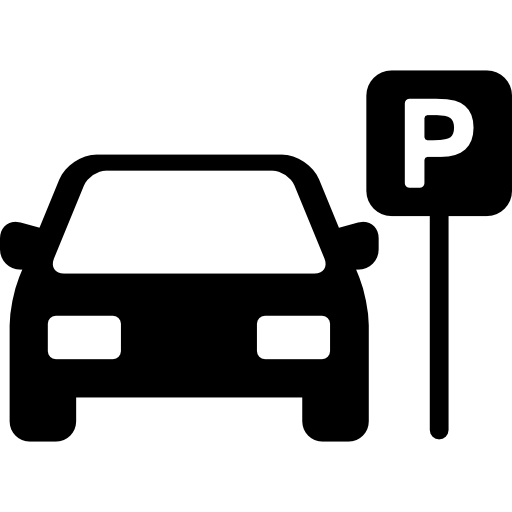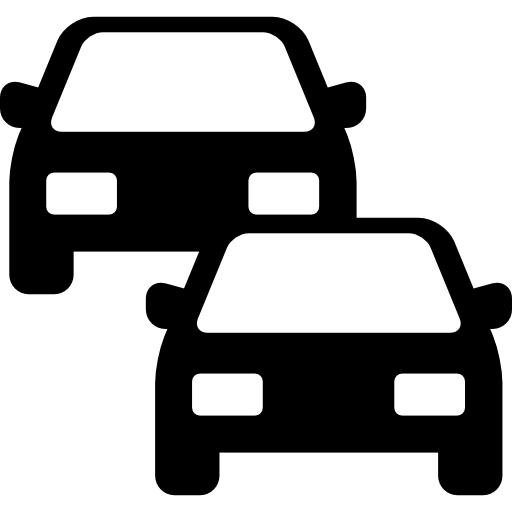
India has the second largest road network in the world and accounts for 10% of all road deaths globally. The laws governing traffic on the roads are regulated under the Motor Vehicles Act 1988, an Act passed by the Indian Parliament, which came into force on 1 July 1989 and applied to the whole of India. Violations and accidents are obvious facts. India has enacted this law since 1914, but the threat of driving is still there, and victims are considering the adequacy of the law to limit the threat. There are various key statements reflected on concerns about road safety issues; road accidents, traffic jams, road rage, underage driving, and driving under the influence of alcohol are some of the key issues to ponder in today's situations. Driving sensibly is a legal, social and ethical responsibility but is rarely seen. Failing to do so by vehicle owners, insurers, and others is irresponsible not only a legal battle but also immense pain and suffering for the company. victims and their family members suffer for the rest of their lives.
Traffic congestion is one of the common problems faced by most people in India. The underlying cause is that the existing pavement cannot handle the growing number of motor vehicles on the road. Cities like Delhi, Mumbai, Kolkata, Chennai, Patna, Lucknow, etc., have to deal with this pervasive traffic problem. They have to deal with thousands of cars crossing the road every day. They share the same traffic problem: the increasing number of vehicles on the road and poor road management. Let's take a look at these road safety laws.
Vehicle Registration Law
Registration is proof of ownership and an important document for selling a vehicle and transferring its ownership. Vehicle registration is mandatory U/s 39 of the Motor Vehicles Act 1988 of the concurrent list of Annex VII of the Constitution of India. Section 39 prohibits the operation of any unregistered motor vehicle. It provides that no owner of such a vehicle may operate an unregistered vehicle in a public place where it is not registered under the provisions of law.
The exception to this rule is for car dealerships. Section 192 of the Motor Vehicles Act 1988 provides that anyone operating a motor vehicle or causing or permitting the use of a motor vehicle contrary to the provisions of section 39 shall be fined up to Rs5000 rupees but not less than 2000 rupees for a second or subsequent offense with a term of imprisonment up to 1 year or a fine of up to Rs10 thousand rupees but not less than Rs 5000 or both.
What is Road Safety?
Road safety is most important as road accidents are one of the leading causes of death in the country. With the number of vehicles on roads increasing with each passing hour, everyone must be road conscious, understands, and obeys all road safety rules issued by the Road Ministry of India. Road safety rules and regulations are as follows
-
 Go Left - Always drive or stay on the left side of the road and let other vehicles pass you on the right.
Go Left - Always drive or stay on the left side of the road and let other vehicles pass you on the right.
-
 Go left when turning left - Approach the curb from the leftmost lane first and ensure enough space for oncoming vehicles.
Go left when turning left - Approach the curb from the leftmost lane first and ensure enough space for oncoming vehicles.
-
 Turn Right - Get into the middle of the road before you begin to turn right, but when rounding the curb, try to stay in the leftmost part of your lane to avoid collisions with oncoming traffic.
Turn Right - Get into the middle of the road before you begin to turn right, but when rounding the curb, try to stay in the leftmost part of your lane to avoid collisions with oncoming traffic.
-
 Always pass on the right. - When being overtaken by another vehicle, do not increase your speed to prevent the vehicle's driver from passing you.
Always pass on the right. - When being overtaken by another vehicle, do not increase your speed to prevent the vehicle's driver from passing you.
-
 Be more careful at intersections - when crossing, ensure that your vehicle does not obstruct other road users.
Be more careful at intersections - when crossing, ensure that your vehicle does not obstruct other road users.
-
 Right-of-way - Always give side to vehicles at intersections by continuing without stopping in the specific direction you are going.
Right-of-way - Always give side to vehicles at intersections by continuing without stopping in the specific direction you are going.
-
 Ambulance - It is everyone's responsibility to provide space for emergency vehicles such as fire trucks and ambulances.
Ambulance - It is everyone's responsibility to provide space for emergency vehicles such as fire trucks and ambulances.
-
 Indicators - Always use indicators to notify other road users of a planned change in the direction of travel. If the vehicle's turn signal is broken without any warning, use the hand signal
Indicators - Always use indicators to notify other road users of a planned change in the direction of travel. If the vehicle's turn signal is broken without any warning, use the hand signal
-
 Parking - Make sure you don't park vehicles in A No parking area that interferes with or disturbs other road users.
Parking - Make sure you don't park vehicles in A No parking area that interferes with or disturbs other road users.
-
 Registration - Your Number plate should always be visible. If it is damaged or damaged, you must replace it soon.
Registration - Your Number plate should always be visible. If it is damaged or damaged, you must replace it soon.
-
 One-Way Roads - Always drive only in the direction allowed on a one-way street. Also, never park in the opposite direction on a one-way street.
One-Way Roads - Always drive only in the direction allowed on a one-way street. Also, never park in the opposite direction on a one-way street.
-
 Stop Line - Always stop your vehicle behind the stop line. Make sure your car stops on roads without stop lines before the zebra crosses.
Stop Line - Always stop your vehicle behind the stop line. Make sure your car stops on roads without stop lines before the zebra crosses.
-
 Traffic lights and signs must be obeyed at all times - One must follow the instructions of a traffic officer when there are no traffic lights.
Traffic lights and signs must be obeyed at all times - One must follow the instructions of a traffic officer when there are no traffic lights.
-
 Rear Distance - Always keep a safe distance from the vehicle in front as this will give you plenty of time to stop in the event of a sudden emergency brake.
Rear Distance - Always keep a safe distance from the vehicle in front as this will give you plenty of time to stop in the event of a sudden emergency brake.
-
 Ramp priority - When going uphill, you have priority because it can be difficult for you to stop and regain momentum
Ramp priority - When going uphill, you have priority because it can be difficult for you to stop and regain momentum
-
 Overloading - Overloaded vehicle is not only dangerous but even illegal. Therefore, you should not carry more than the allowed number of passengers or too much luggage that the vehicle is not designed to carry.
Overloading - Overloaded vehicle is not only dangerous but even illegal. Therefore, you should not carry more than the allowed number of passengers or too much luggage that the vehicle is not designed to carry.
-
 Hazardous Materials - Do not carry explosives or flammable or harmful substances as they present a fire hazard.
Hazardous Materials - Do not carry explosives or flammable or harmful substances as they present a fire hazard.
-
 Driving in the opposite direction - When driving in the opposite direction, you must ensure not to obstruct other people on the road.
Driving in the opposite direction - When driving in the opposite direction, you must ensure not to obstruct other people on the road.
-
 Required documents - Always carry the following documents with you - Driving license, vehicle registration certificate, insurance certificate, certificate of health (for commercial vehicles), travel license (for utility vehicles), and PUC certificate.
Required documents - Always carry the following documents with you - Driving license, vehicle registration certificate, insurance certificate, certificate of health (for commercial vehicles), travel license (for utility vehicles), and PUC certificate.
-
 Always wear the seat belt - Make sure you always wear your seat belt, even when you're in the back seat. This will not only keep you from getting penalized, but it will even protect you.
Always wear the seat belt - Make sure you always wear your seat belt, even when you're in the back seat. This will not only keep you from getting penalized, but it will even protect you.
-
 Avoid distractions - Distracted driving is a leading cause of accidents. Therefore, one should avoid answering the phone while driving. The driver must always be fully focused on the road.
Avoid distractions - Distracted driving is a leading cause of accidents. Therefore, one should avoid answering the phone while driving. The driver must always be fully focused on the road.
-
 Never drive under the influence of alcohol or any other kind of intoxication -This can cause you to lose control while driving and lead to an accident. Driving while intoxicated or intoxicated is also against the law.
Never drive under the influence of alcohol or any other kind of intoxication -This can cause you to lose control while driving and lead to an accident. Driving while intoxicated or intoxicated is also against the law.
-
 Always obey the speed limits as driving at a higher speed can crash you and, even worse, cause an accident.
Always obey the speed limits as driving at a higher speed can crash you and, even worse, cause an accident.
-
 Vehicle maintenance - Always maintain your vehicle to ensure safety on the highway as poorly maintained roads driving can cause an accident, injuring you, and too another road user can also get injured.
Vehicle maintenance - Always maintain your vehicle to ensure safety on the highway as poorly maintained roads driving can cause an accident, injuring you, and too another road user can also get injured.
Road safety rules for Bikes
While most of the tips mentioned above apply to all motorcycle users, here are two additional road safety rules in India that two-wheeler users should always remember:
-
Wearing a helmet - While wearing a helmet for long periods can be uncomfortable for some time but it protects you from collisions when falling and even from gusty winds during high-speed riding.
-
Avoid changing lanes between lanes - Many 2-wheelers prefer to cross lanes and squeeze through small gaps, but all of this should be avoided to avoid accidents. Observe lane discipline and avoid sudden movements.
What steps can be taken to improve road safety in India?
Different sections of society should unite in this direction to ensure high traffic awareness and compliance with road safety rules in India. Here's everything the government and the public need to do -
-
Issue and properly implement road safety policies. Efficient use of resources to ensure high road traffic safety. Higher budget allocation for road safety programs
-
Local authorities can play a leading role in properly implementing road traffic safety rules in India through proper planning of road works in residential areas.
-
Reduce your risk of drunk driving.
-
Provide support and leadership for road safety campaigns and initiatives. Convince the local community to participate in workshops on understanding road safety rules in India. Promote road traffic safety education in schools so that the necessary knowledge can be imparted from an early age.
-
Contribute to lifelong road user training.
-
The media can help raise public awareness by understanding the factors that cause road accidents and then raising awareness.
-
The media can also support road safety initiatives by Police, and enforcement agencies can determine road user behavior, temperament, and vehicle standards through a balance of education, encouragement, and effective enforcement strategies.
-
Maximize application efficiency through the use of proven techniques and technologies. Police can also use crash data to identify hotspots and then work to reduce the factors that cause crashes. The Health Authority can ensure the development of effective emergency services
Road Safety Initiatives taken by the Indian Government
The Ministry of Road Transportation and Highways (M.O.R.T.H.) has taken several steps to promote high traffic awareness and proper implementation of road safety. This is being done through –
-
Important Schemes administered by the Road Safety cell are:
-
Publicity Programs.
-
Grants-in-aid to Voluntary Organizations for organizing road safety programs.
-
National Highway Accident Relief Service Scheme.
-
Refresher Training to Heavy Vehicle Drivers in Unorganized Sector.
-
Setting up of Model Driving Training school.
The government of India has been working closely with World Bank and Asian Development Bank to improve road safety. The steps taken for this include :
-
The most important projects undertaken by the Government of India are the “National Road Development Program” and the “Rural Road Project” under the leadership of Mr. Atal Bihari Vajpayee.
-
Non-governmental organizations” have sprung up in many cities to tackle this problem at their level. The "police services" organize road safety weeks and painting competitions.
-
The ministry's "road safety unit" also works closely to strengthen institutions and organizations.
-
They have developed a reward program to reward organizations/individuals with outstanding contributions in their fields.
Some important road safety tips are mentioned below:
-
Never use a cell phone while driving.
-
Always fasten your seat belt even when you are in the back seat.
-
Do not drink and drive.
-
Obey the speed limit.
-
Pay special attention to children, the elderly, and pedestrians.
-
Don't drive when you're tired.
-
Walk carefully on public roads.
-
Always watch other road users and try to keep yourself safe in front of their vehicles and keep your distance.
-
Always wear a helmet and fasten your seat belt.
What are the statistics on road accidents in India?
Road accidents have killed 47,984 people on National Highways (NHS), including motorways, in 2020 and 53,872 in 2019. Worldwide, road Accidents caused 1.3 million dead and 50 million injured. Of these, India's mortality rate is 11%. The main causes: The main causes of crashes on the NHS are vehicle design and condition, road engineering, speeding, drunk driving/drinking, and drug use, driving in the wrong lane. road, running red lights, using cell phones, etc.
Motor Vehicle laws in India
The law increases fines for traffic violations, faulty vehicles, underage drivers, etc. It provides for a Motor Vehicle Accident Fund, which will provide compulsory insurance to all road users in India for certain types of accidents. It also provides for a National Road Safety Council, which will be established by the central government according to the announcement.
The Act lays down rules for ordinary carriers, limiting their liability and declaring the value of the goods delivered to them to determine their liability for loss or damage to the goods. with the goods through the negligence or criminal act of themselves, their servants or agents, and in matters relating to it or incidentally.
This law regulates the control of the land on national highways, right-of-way, and traffic on national highways and eliminates illegal appropriation on these roads.
The law establishes authority for developing, maintaining, and managing the NHS and its related or incidental affairs.
Analysis of Cyrus Mistry Accident case
Who was Cyrus Mistry?
Cyrus Mistry succeeded Ratan Tata as president of the Tata Sons but was later ousted and was killed in a fatal car crash in Maharashtra's Palghar. He was 54 years old. Along with him, his fellow passenger Jehangir Pandora, Director of the Global Strategy Group at the KPMG office in London, was also killed in the crash. Two other people in the vehicle, renowned gynecologist Anahita Pandora (55 years old) and her husband Darius Pandora (60 years old), were seriously injured and transported to Mumbai from Rainbow Hospital in Vapi township, Gujarat. Mistry and Pandora were not wearing seat belts and the car was speeding and the driver's "wrong judgment" caused the accident.
Billionaire business magnate Cyrus Mistry, former chairman of Tata Sons and branch of Shapoorji Pallonji Group, died in a road accident in the Palghar district of Maharashtra Apart from Mistry, the second victim was Jahangir Pandora, who was a family friend. Mistry (54 years old) and Pandora were killed when his Mercedes crashed into the divider along the Surya River, a section of the Mumbai-Ahmedabad highway, at a speed of about 100 km from Mumbai while traveling from 'Ahmedabad to Mumbai. Palghar police have registered a report of accidental death and investigations are currently underway.
What do Initial reports suggest?
-
A preliminary police investigation has revealed that the luxury car in which former Tata Sons president Cyrus Mistry was traveling, which crashed into a piece of debris killing Mistry and Jahangir Pandora, was speeding and the two sitting in the back seat without a seat belt.
-
After passing the Charoti checkpoint in Palghar, the car covered a distance of 20 km in just 9 minutes.
Investigation on Cyrus Mistry case
-
The doctor who treated Cyrus Mistry and Jahangir Dinsha Pandole said that Cyrus Mistry was brought dead but Jahangir Dinsha Pandol died in transit.
-
Cyrus Mistry suffered a head injury and Jahangir Dinsha, Anahita Pandole's brother, broke his left leg and injured his head.
-
Both Cyrus and Jahangir are in the back. Seat belts for front-facing rear seat occupants are required under the Motor Vehicles Act.
-
Anahita Pandora, a gynecologist in Mumbai, was driving. The car was overspeeding when hitting the median on the bridge over the Surya River.
Conclusion
Road safety is very important nowadays because the number of vehicles on the road has increased so much and it is crucial that we follow traffic rules and laws to save ourselves and our families, and avoid traffic accidents. Raising awareness of road safety rules for others can also make our roads safer. Avoiding speeding and raising general awareness can greatly reduce the risk of an accident. Regularly checking the condition of the vehicle and servicing the parts also helps to eliminate any potential risks. And above all, never use a cell phone while driving.